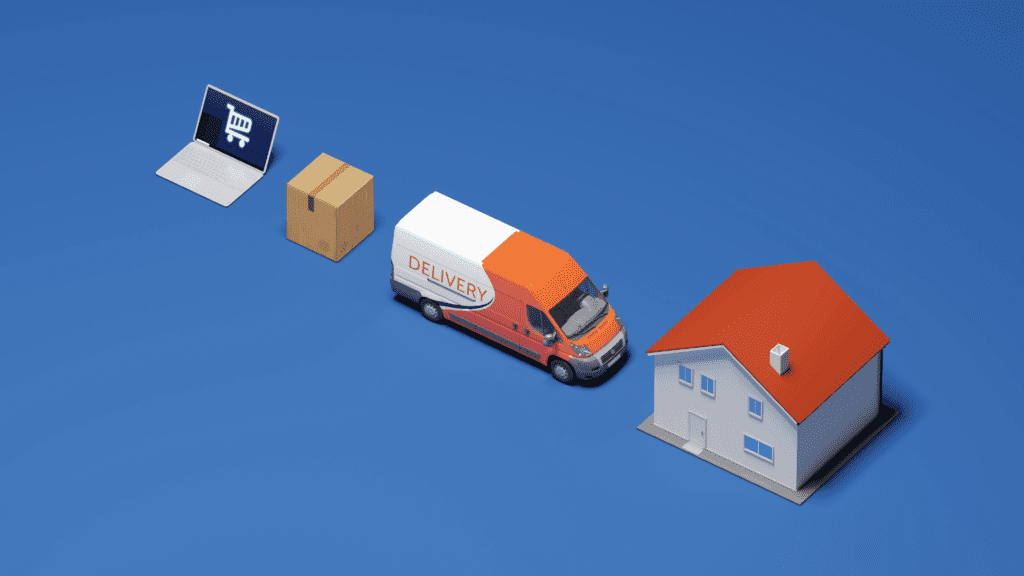
An excellent e-commerce site should be designed to please both the buyer and the seller without breaking the bank for either party. From designing the layout to developing a secure payment system, there are many moving pieces. In this article, we’ll go deeper into the many facets of e-commerce design and outline the actions you need to follow to open an effective online shop.
Designing an E-commerce System
Designing an e-commerce system requires careful planning and consideration of the business goals and customer needs. Here are some key steps involved in designing an e-commerce system:
- Understanding the business goals and customer needs: It is important to identify the target audience, their needs, and preferences, and align them with the business goals. This will help create a customer-centric e-commerce website.
- Choosing the right platform and technology: If you want your online store to be a success and good for your pocket, you need to make sure you choose the correct e-commerce platform, technologies, and of course good Web Designer. The system should be user-friendly, safe, expandable easy should be easily customizable. The webmaster should be interested in what he is doing and qualified in the field..
- Creating an intuitive user interface: The user interface should be simple and easy to navigate, with clear calls-to-action that guide the user through the purchase process.
- Implementing effective payment and shipping systems: Payment and shipping systems must be secure, reliable, and easy to use. The checkout process should be streamlined to reduce cart abandonment.
E-commerce UX (User Experience)
E-commerce UX refers to the experience that users have while interacting with an e-commerce website. It is essential to create a positive user experience to enhance customer satisfaction and loyalty. Here are some key aspects of e-commerce UX:

- Creating a user-centric design: E-commerce design must be focused on the user, taking into account their needs, preferences, and behavior.
- Improving the overall shopping experience: The shopping experience should be seamless, easy, and enjoyable, with minimal friction.
- Enhancing customer trust and loyalty: Building trust with customers is crucial for the success of an e-commerce website. This can be achieved by offering secure payment systems, reliable shipping, and exceptional customer service.
Major Parts of Designing an E-commerce Site
Designing an e-commerce website involves several components that need to function cohesively to provide a smooth shopping experience. The following features are essential for every online store:
- Homepage design: The homepage should provide a clear overview of the products and services offered,some description about the company and contact details with clear calls to action that lead users to the relevant pages.
- Category and product page design: The category and product pages should be visually appealing and informative, with high-quality product images, detailed descriptions, and customer reviews.
- Shopping cart and checkout design: The shopping cart and checkout process should be simple and easy to use, with clear instructions and minimal distractions.
- Mobile optimization and responsive design: With the majority of online purchases made on mobile devices, it is essential to design an e-commerce website that is optimized for mobile devices.
Unique Features of E-commerce
E-commerce websites offer several unique features that are not found in traditional retail stores. These features include:
- Personalization and customization: E-commerce websites can offer personalized recommendations based on a user’s browsing and purchase history, and provide options for customization.
- Product search and filtering: E-commerce websites offer powerful search and filtering options, making it easy for users to find the products they are looking for.
- Product recommendations and reviews: E-commerce websites can provide recommendations and reviews from other customers, helping users make informed purchasing decisions.
- Social media integration and user-generated content: E-commerce websites can integrate with social media platforms and display user-generated content, such as customer photos and reviews.
Types of E-commerce
There are several types of e-commerce, including:
- B2B (Business-to-Business): E-commerce transactions between businesses.
- B2C (Business-to-Consumer): E-commerce transactions between businesses and individual consumers.
- C2C (Consumer-to-Consumer): E-commerce transactions between individual consumers, such as online marketplaces.
- C2B (Consumer-to-Business): E-commerce transactions where consumers sell products or services to businesses, such as freelance work or influencer marketing.
- B2G (Business-to-Government): E-commerce transactions between businesses and government entities.
The most successful type of e-commerce depends on the specific business and industry. However, B2C e-commerce is generally the most popular and profitable type.
Reasons Why E-commerce Businesses Fail
E-commerce businesses can fail for several reasons, including:
- Poor website design and user experience: A poorly designed website that is difficult to use can lead to high bounce rates and low conversion rates.
- Ineffective marketing and advertising: E-commerce businesses must effectively market their products and services to attract and retain customers.
- Lack of differentiation and competitive advantage: E-commerce businesses must differentiate themselves from competitors to stand out in the crowded online marketplace.
Starting an E-commerce Business with No Money
Starting an e-commerce business with no money can be challenging, but not impossible. Here are some tips to get started:
- Choose a profitable niche: Select a niche that has high demand and low competition to increase your chances of success.
- Use a dropshipping model: With drop shipping, you don’t need to invest in inventory upfront. Instead, you purchase products from a supplier and have them shipped directly to the customer.
- Leverage social media and influencer marketing: Use social media platforms to promote your products and collaborate with influencers to reach a larger audience.
Easiest E-commerce Examples
Here are five examples of e-commerce businesses that are relatively easy to start:
- Print-on-demand: Create designs for t-shirts, mugs, and other products that are printed on demand when a customer orders.
- Affiliate marketing: Promote other company’s products and services and earn a commission on sales.
- Digital products: Create and sell digital products, such as e-books, courses, and templates.
- Subscription boxes: Create a subscription box service that delivers products to customers on a regular basis.
- Handmade goods: Sell handmade goods, such as jewelry or crafts, on e-commerce platforms like Etsy.
E-commerce Website Development Costs
When it comes to e-commerce website development costs, they can vary depending on several factors. Some of the factors include:
- Platform: Choosing the right platform is crucial when it comes to website development costs. Popular platforms like Shopify and WooCommerce offer pricing plans for businesses of all sizes.
- Design: Designing a visually appealing and user-friendly website can be costly, especially if you choose to work with a professional web designer.
- Functionality: E-commerce websites require several features and functionalities like payment gateways, inventory management, and shipping integrations. Adding these features can increase development costs.
Top E-commerce Websites in 2023
Today’s e-commerce market is highly competitive and constantly changing, so businesses must adapt quickly to survive. Some of the top visited e-commerce sites in 2023 :
- Amazon: With over 2 billion monthly visitors, Amazon remains the world’s largest e-commerce platform.
- Shopify: Shopify is a popular e-commerce platform that allows businesses to create online stores with ease flexible and easy to understand. There are a lot of ready designs and plugins ready to use.
- Walmart: In recent years, Walmart’s online store has risen to the ranks of the most visited ecommerce sites.
- Alibaba: Alibaba is a Chinese e-commerce giant that dominates the Asian market and has been expanding globally.
- eBay: eBay is a popular online marketplace that allows individuals and businesses to buy and sell goods.

Conclusion
The success of an online store depends on how thoroughly it was thought out, how carefully it was built, and how well it understands its target audience. The key to a successful e-commerce venture is adhering to UX and design best practices to ensure a smooth, satisfying, and lucrative customer journey. To remain competitive, businesses must also keep up with, and even anticipate, emerging trends in electronic commerce. With the correct strategy and implementation, e-commerce will continue to be a lucrative and fruitful business model well beyond 2023.




